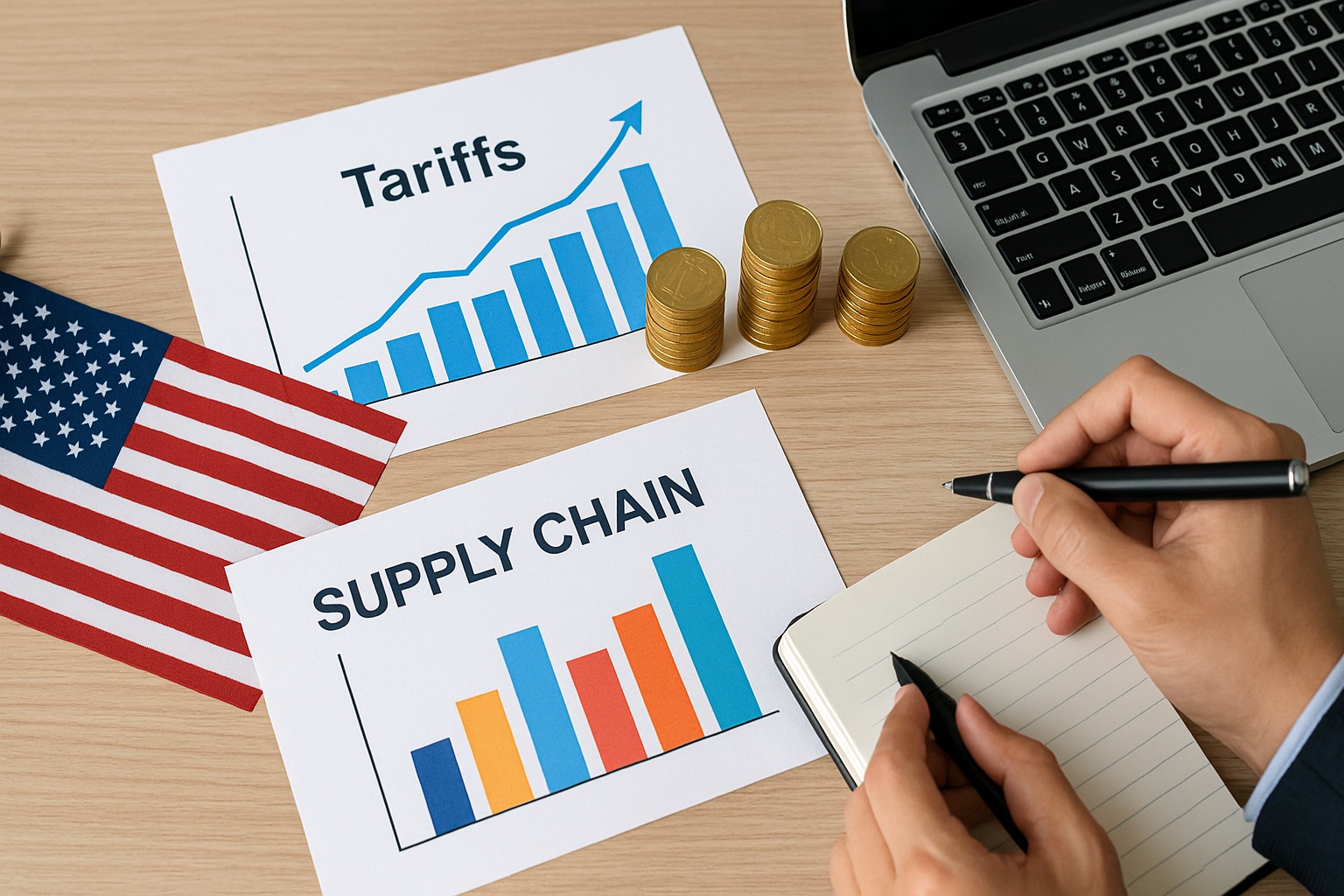How can operators turn high tariffs into an opportunity for smarter planning

High tariffs can feel like an unavoidable cost of doing business for U.S. bubble tea operators. But what if they could also be the trigger for better inventory planning, smarter cash flow management, and more predictable operations?
Let's look at two key dimensions — financial planning and supply chain management — and see how forward-thinking operators can turn a potential cost burden into a competitive advantage.
1. Financial Perspective — Using Capital as a Strategic Tool
1.1 Hedging Against Price Surges
During the COVID-19 pandemic, freight rates from Asia to the U.S. spiked as much as 4–5x, and tapioca pearl prices climbed 15–25% in some months. Operators that had secured inventory ahead of time were able to ride out the storm without raising menu prices or disappointing customers.
Locking in a container today — even with higher tariffs — acts as a cost hedge. It allows you to:
-
Stabilize cost of goods sold (COGS) for the next 1–3 months.
-
Protect margins against unexpected price spikes or currency fluctuations.
-
Avoid the risk of paying for urgent air freight (which can be 5–7x more expensive per kg than ocean freight).
Example: If your store uses 200 kg of tapioca pearls per month and prices rise by $1/kg, that’s an extra $200/month in costs — or $2,400 annually. A pre-purchase strategy can lock in that cost today.
1.2 Inventory Is Cheaper Than Lost Sales
Operators often overestimate the “cash flow pain” of stocking inventory. In most bubble tea shops, raw ingredients represent only 15–25% of operating expenses, while rent and labor typically account for 60% or more.
A one-month buffer of inventory might tie up a few thousand dollars, but compare that to:
-
The revenue loss from a week of stockout (potentially $5,000–$10,000 for a busy shop).
-
The reputational damage from telling customers “no pearls today.”
Strategic stocking is less about overbuying — and more about protecting uptime, keeping your store profitable and consistent.
2. Logistics Perspective — Designing a Smarter Supply Chain
2.1 Consolidation & Container Optimization
Full-container-load (FCL) shipping is the most cost-effective way to import. By consolidating tea, toppings, powders, syrups, and packaging into a single container, you can:
-
Reduce per-unit freight cost by 15–25% compared to multiple LCL shipments.
-
Simplify customs clearance with fewer documents and entry fees.
-
Align replenishment cycles across SKUs, making inventory management easier.
Our team helps clients calculate the ideal order mix to maximize cubic utilization — often achieving 90%+ container efficiency, saving hundreds of dollars per shipment.
2.2 Flexible Payment Terms
High tariffs can temporarily increase your upfront cash requirement. That’s why offering open account terms (e.g., net 30 or net 60) can make a significant difference:
-
Aligns payment with product sell-through, improving working capital turnover.
-
Lets operators keep cash available for payroll, marketing, or expansion projects.
-
Reduces stress from having to prepay 100% before goods even ship.
This approach works best for trusted, recurring customers — balancing supplier risk and buyer flexibility.
2.3 Scenario Planning & Risk Reduction
Advanced operators go beyond just buying stock — they run what-if scenarios:
-
What happens if freight rates rise another 10%?
-
What if customer traffic grows 20% next quarter?
-
What if tariffs are adjusted again?
By modeling demand and shipping costs, you can proactively adjust order volumes and frequency, avoiding last-minute surprises.
Turning Tariffs Into a Competitive Advantage
High tariffs may raise your landed cost, but they can also push you to build a more resilient supply chain. Operators that secure inventory, optimize freight, and negotiate smarter payment terms not only control costs — they also maintain menu stability, keep customers happy, and grow market share while competitors scramble.
Practical Next Steps
-
Audit Your Consumption: Know exactly how much of each SKU you use per month.
-
Calculate Buffer Stock: Aim for 1–3 months of inventory based on shelf life.
-
Plan Container Mix: Work with suppliers to consolidate shipments efficiently.
-
Negotiate Payment Terms: Align cash outflow with sales inflow to protect liquidity.
Contact us if you'd like to explore a customized stocking and shipping plan. We’ll help you model scenarios, secure supply, and stabilize your cost structure — even in a high-tariff environment.

